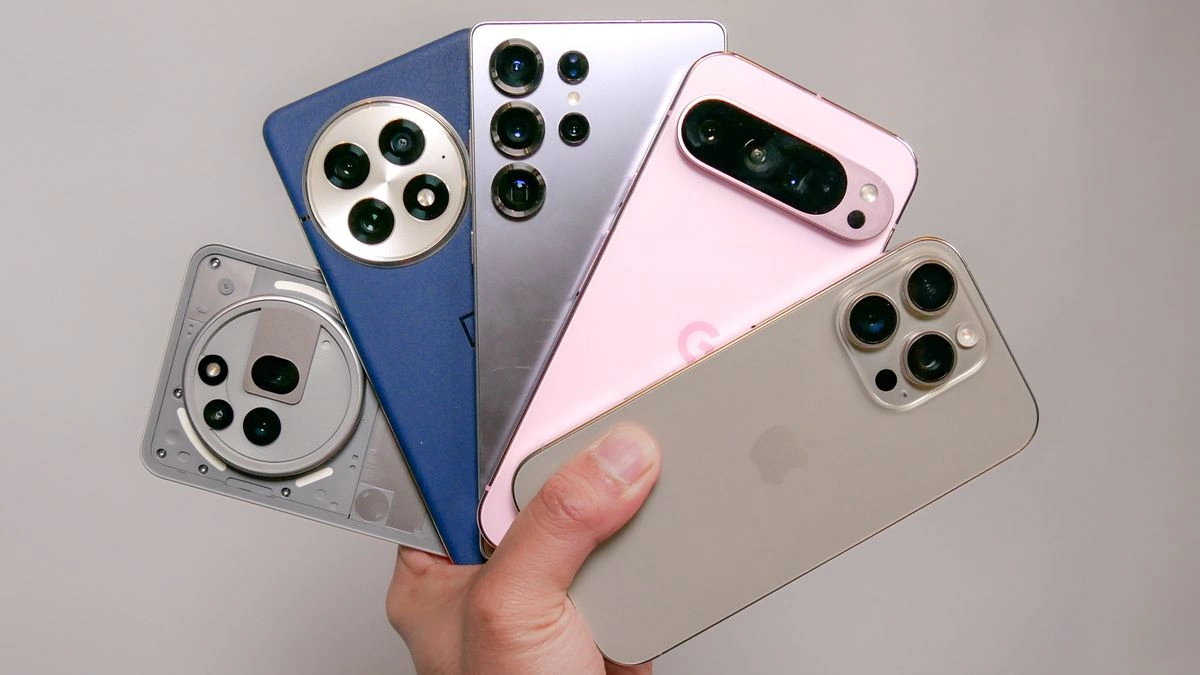Okay, let’s be honest. The world of smartphones is a bit… much. New models drop every other week, each promising to be the next big thing. But separating the truly groundbreaking from the hyped-up is tough. That’s where we come in. This isn’t just another spec sheet comparison. We’re diving deep into what makes a cutting-edge smartphone truly exceptional and explaining why it matters to you.
Beyond the Hype | What Actually Matters

So, what does make a flagship phone truly stand out? Is it the processor speed? The number of cameras? The price tag? Well, it’s all of those things – and none of them. See, the raw specs are only half the story. The real magic happens when hardware and software work together seamlessly to create an experience that’s both powerful and intuitive. Think about it – you can have the most powerful chip on the market, but if the software is clunky and the interface is confusing, what’s the point?
For example, Apple have a dedicated mobile chipset that allows them to integrate their software far better than android can with all the fragmentation that exist. If you consider battery life, it’s something everyone values, that’s why you should look into the iPhone pro max battery life , which allows up to 29 hours of video playback!
The Rise of Computational Photography
Let’s talk cameras. These days, everyone is obsessed with megapixels. But here’s the thing: megapixels are just one piece of the puzzle. What really separates a great smartphone camera from a mediocre one is computational photography – that is using software and AI to enhance image quality. Smartphone photography is becoming increasingly reliant on software algorithms to process images, reduce noise, and boost dynamic range. Think about night mode, portrait mode, and even basic HDR – all powered by advanced algorithms that weren’t even conceivable just a few years ago. What fascinates me is how phones like the Google Pixel line have consistently punched above their weight in camera performance, despite not always having the most impressive hardware on paper. It’s a testament to the power of software optimization.
Foldable Phones | A Glimpse into the Future?
Foldable phones. Remember when they were just a concept, a pipe dream relegated to sci-fi movies? Well, they’re here now. And while they’re not quite mainstream yet, they offer a tantalizing glimpse into the future of mobile devices . The appeal is obvious: you get the portability of a smartphone with the screen real estate of a tablet. But, and it’s a big but, early foldable phones have been plagued with issues – durability concerns, high prices, and software that’s not always optimized for the folding form factor. The durability problems are worrying and they tend to be expensive, like the Samsung Galaxy Z Fold5 . Are they a gimmick? Or a genuine evolution? I suspect that in the long term, foldable phones will be common and it will all come down to how durable the phones get. Let me rephrase that for clarity – once the durability is nailed, and the prices come down, that’s when these smartphones become truly compelling for the average consumer.
The Importance of Software Updates
A often-overlooked aspect of leading-edge smartphones is the importance of software updates. It’s not just about getting the latest emojis or a slightly redesigned interface. Regular software updates are crucial for security, performance, and access to new features. And here’s the thing – not all manufacturers are created equal when it comes to software support. Some companies are excellent at providing timely updates for years, while others tend to abandon their devices after just a couple of years. That is why you need to consider the length of software support before buying a new phone.
So, consider the operating system of a potential new device . The Google pixel phones benefit from very quick updates. Android phones usually have long update times as it can take up to a month or more for a phone to be updated.
5G and Beyond | The Future of Connectivity
5G is here, and it’s changing everything. At least, that’s the promise. The rollout has been slower than expected in many parts of the world. The potential is huge – faster download speeds, lower latency, and the ability to connect more devices than ever before. But the real impact of 5G will be felt when it enables new applications that we haven’t even thought of yet. And the journey doesn’t stop with 5G. The next generation of wireless technology is already on the horizon, promising even faster speeds and lower latency. The pixel update are an exciting prospect and something to look forward to.
What truly matters is whether these leading-edge smartphones genuinely improve our lives. They are a glimpse into the future. So, embrace the future, but don’t forget to ask yourself: does this new technology actually make my life better, or is it just another shiny distraction?
FAQ
What if I don’t want to spend a fortune on a new smartphone?
You don’t have to! There are plenty of excellent mid-range phones that offer great performance and features at a more affordable price point.
How important is the processor in a smartphone?
The processor is crucial for overall performance, especially when it comes to demanding tasks like gaming and video editing.
Are foldable phones worth the hype?
That depends on your needs and budget. They offer a unique experience, but they’re still quite expensive and may not be as durable as traditional smartphones.
How long should a smartphone last before I need to replace it?
With proper care, a good smartphone should last for at least 3-4 years.
What about battery life?
Battery life is super important! Look for phones with large batteries and efficient processors to get the most out of your device.




